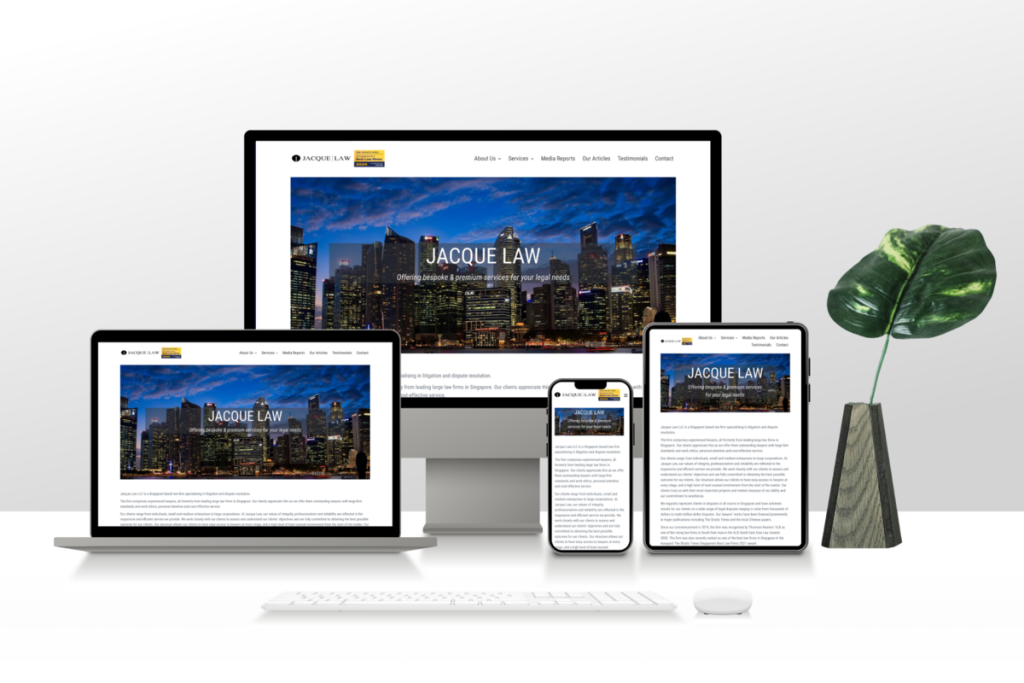In the digital world, the question of whether to prioritize User Experience (UX) or Search Engine Optimization (SEO) often comes up. For the amateur, these two disciplines might seem like competing priorities—one focused on code and algorithms, the other on aesthetics and human psychology. However, a professional website designer knows this is a false choice. True digital success is built on the symbiotic relationship between SEO and UX. They are not two separate paths to success; they are two sides of the same coin.
SEO is the magnet that draws users to your site; UX is the glue that keeps them there, converts them, and encourages them to return. Without SEO, the most beautiful, user-friendly site remains an undiscovered masterpiece. Without good UX, a highly-ranked site will hemorrhage traffic as frustrated visitors “bounce” back to the search results.
This comprehensive guide will delve into why a holistic, integrated approach to SEO and UX is essential for modern web design, detailing how a professional website designer blends these two forces to deliver maximum commercial value.
See More: 7 Critical Website Development Factors for Conversions
The Convergence: How Google Made UX a Ranking Factor
Historically, SEO focused heavily on technical elements like keywords, meta tags, and backlinks, sometimes resulting in clunky, keyword-stuffed pages that satisfied the search engine but frustrated the user. UX focused on usability and design, sometimes neglecting the necessary technical structure to even get found.
This era of siloed priorities ended when Google, the dominant force in web traffic, shifted its focus to User-Centric SEO. Google’s ultimate goal is to provide the best possible answer and experience to its users. Therefore, a website that provides a poor experience is inherently a poor answer, regardless of its keyword density.
The introduction of major updates, particularly the Core Web Vitals (CWV), formalized UX as a direct, technical ranking factor. CWV measures three key metrics that are fundamentally about user experience:
- Largest Contentful Paint (LCP): Measures loading performance. A slow site is a bad experience.
- First Input Delay (FID): Measures interactivity. A non-responsive site is frustrating.
- Cumulative Layout Shift (CLS): Measures visual stability. A page that jumps around while loading is disruptive.
By tying these user-focused metrics directly to search ranking, Google has mandated that a professional website designer must now be a UX-SEO integrator.
The Symbiotic Relationship: SEO Drives Traffic, UX Drives Conversions
The success of a website is measured by two key outcomes: Visibility (getting found) and Effectiveness (converting traffic). SEO handles the former; UX handles the latter.
SEO: The Visibility Engine

SEO is the practice of optimizing a website to increase its visibility in search engine results pages (SERPs). It involves:
- Keyword Strategy: Understanding what users are searching for.
- Technical SEO: Optimizing site speed, mobile-friendliness, and crawlability.
- Content Creation: Producing high-quality, authoritative, and topically relevant information.
UX: The Conversion and Retention Engine

UX design ensures that every interaction a visitor has with the website is positive, intuitive, and effective. It involves:
- Information Architecture: Creating a logical, easily navigable site structure.
- Usability: Ensuring all elements (buttons, forms, links) are functional and predictable.
- Visual Design: Using layout, contrast, and typography for readability and aesthetic appeal.
Where the Two Meet: Shared Ground
The most critical elements of web design serve both masters simultaneously:
| Shared Element | Benefit for SEO (Visibility) | Benefit for UX (Effectiveness) |
| Site Speed | A direct ranking factor (Core Web Vitals). Decreases bounce rate. | Reduces user frustration. Keeps visitors on the page. |
| Mobile Responsiveness | Essential for Google’s mobile-first indexing. | Ensures seamless interaction for the majority of modern users. |
| Site Architecture | Provides a clear roadmap for search engine crawlers (crawlability). | Allows users to find information quickly and intuitively (findability). |
| High-Quality Content | Ranks for target keywords; builds E-E-A-T (Expertise, Experience, Authoritativeness, Trustworthiness). | Answers user questions; drives engagement; reduces pogo-sticking (returning to SERP). |
See More: 5 Best Website Builders for Small Business in 2025
The Professional Website Designer’s Integrated Workflow

A professional website designer does not treat SEO as an afterthought or a “fix-it” job for the marketing team. They integrate SEO best practices into the very foundation of the design process.
Phase 1: Research and Planning (UX + SEO)
The first step is a unified research process:
- User Research (UX): Define the target audience, their needs, pain points, and desired user journey. This results in user personas.
- Keyword Research (SEO): Identify the search queries and intent driving the most valuable traffic. This results in a keyword map.
- Synthesis: Map the keyword map directly onto the user journey. Every page designed must address both a user need (UX) and a search query (SEO). For example, a “How-To Guide” page satisfies the user’s informational intent and targets long-tail keywords.
Phase 2: Information Architecture and Wireframing (UX + SEO)
The site structure is where UX and SEO are most physically intertwined.
- SEO Goal: Crawl Depth: Ensure important pages are linkable within three clicks from the homepage to maximize crawl efficiency.
- UX Goal: Findability: Create a logical, simple, and predictable navigation hierarchy that aligns with user expectations (e.g., placing the “About Us” page in the footer).
- Implementation: A professional website designer uses wireframes to visually represent the site structure, ensuring clear hierarchy (main categories) and efficient internal linking (related content suggestions) to satisfy both crawlers and users.
Phase 3: Visual Design and Content Integration (UX + SEO)
This phase focuses on on-page elements that affect both readability and rank.
- Headings (H1-H6): The H1 tag must contain the primary page keyword (SEO) while serving as a clear, compelling title for the user (UX). Subsequent headings break up the content (UX) and provide topical structure for search engines (SEO).
- Content Layout: Use short paragraphs, bullet points, and high-contrast typography (UX) to improve readability. This, in turn, increases dwell time and reduces bounce rate, both positive signals for Google (SEO).
- Image Optimization: Use descriptive filenames and optimized alt tags for every image. The alt tag describes the image for visually impaired users (UX/Accessibility) and provides textual context for search engine crawlers (SEO).
Phase 4: Technical Implementation and Launch (SEO + UX)
Before launch, the technical foundation must be robust.
- Code Efficiency: The designer ensures clean, minimalist code to reduce file size and boost load speed (LCP).
- Structured Data (Schema Markup): Implementing Schema markup helps search engines understand the content’s context (e.g., defining a page as a “Recipe” or “Product”) (SEO). This often enables rich snippets in the SERP, improving the Click-Through Rate (CTR) (UX/SEO).
- Accessibility (A11Y): Designing for accessibility (proper color contrast, keyboard navigation) is a core UX principle and aligns with Google’s quality guidelines (SEO).
See More: Think Your Website Looks Fine? Here’s What a Top Web Design Company Sees Differently
E-Commerce Success: A Case for SXO (Search Experience Optimization)

The successful fusion of SEO and UX is increasingly being referred to as Search Experience Optimization (SXO). For an e-commerce site, the synergy is particularly powerful:
| UX Focus | SEO Impact | Conversion Result |
| Clear Checkout Path | Lowers the exit rate from high-value pages. | Higher Sales: Reduces abandoned carts. |
| Faceted Navigation | Allows search engines to crawl all filtered results. | Better Product Discovery: Users find the exact product they need faster. |
| High-Quality Product Images | High user engagement (scroll depth, time on page). | Increased Trust: Users feel confident in the product quality. |
A professional website designer views the entire website as an experience. They ensure that once SEO has delivered the visitor, the UX is compelling enough to complete the journey, thus maximizing the return on investment for all marketing efforts.
Professional Website Designer: 8 Essential Q&A on UX & SEO
The integration of UX and SEO is complex, leading to common questions about priorities and best practices.
What should I prioritize first: attracting traffic (SEO) or converting traffic (UX)?
You must prioritize attracting traffic (SEO) AND preparing for conversions (UX) simultaneously. No traffic means no one sees the great UX; poor UX means wasted traffic. A professional website designer integrates SEO elements like site architecture and clean code during the initial UX design phase to ensure both are optimized from day one.
Does “keyword stuffing” still work for SEO?
No, it’s detrimental to both. Keyword stuffing (excessively repeating keywords) severely degrades the user experience (UX) by making the content unnatural and unreadable. Google’s algorithms are now sophisticated enough to penalize content that prioritizes keywords over user value, leading to poor SEO and a high bounce rate.
What role does site navigation play in combining UX and SEO?
Site navigation is the single most important bridge. For UX, clear, intuitive navigation ensures users can find what they need quickly, reducing frustration. For SEO, a logical, shallow site structure (flat hierarchy) ensures search engine crawlers can efficiently discover and index all pages, distributing authority (link equity) effectively across the site.
How does a slow-loading website affect my SEO?
A slow-loading website directly and severely impacts SEO through the Largest Contentful Paint (LCP) metric of Core Web Vitals, which is a direct ranking factor. Furthermore, it increases the bounce rate (a negative UX signal) because users typically abandon a site that takes more than 3 seconds to load, signaling low quality to Google.
Can I use beautiful custom fonts and large images without hurting my SEO?
Yes, but optimization is key. A professional website designer uses modern image formats (like WebP), compresses files without visible quality loss, and implements lazy loading so that large images only load as the user scrolls to them. For custom fonts, they use browser-safe alternatives as fallbacks and ensure the fonts are loaded efficiently to minimize LCP.
How can A/B testing benefit both UX and SEO?
A/B testing allows a professional website designer to test different layouts, CTAs, or navigation designs (UX elements). The results directly impact SEO by improving user signals: a better-performing variant will increase time on page and conversion rate, which Google interprets as a sign of high-quality content worthy of a higher ranking.
What is “E-E-A-T” and how does UX design support it?
A: E-E-A-T stands for Expertise, Experience, Authoritativeness, and Trustworthiness. It’s Google’s framework for assessing content quality. UX supports E-E-A-T by:
- Displaying trust signals (security badges, clear privacy policies).
- Showcasing social proof (customer reviews, testimonials).
- Featuring author bios with verifiable credentials.
- Using a clean, professional visual design that conveys credibility.
Is responsive design enough for mobile optimization in the context of SEO and UX?
Responsive design is the foundation, but not the entirety, of mobile optimization. It ensures the site adapts to the screen size (SEO/UX). However, a complete mobile strategy (UX/SEO) also requires:
- Optimizing for FID (First Input Delay): Ensuring the mobile site is instantly interactive.
- Touch-friendly CTAs: Buttons are large enough for a thumb.
- Simplified Navigation: Using a clean, concise hamburger menu structure to declutter the limited screen space.
See More: Top 10 SEO Tips for New Websites
Conclusion: The Future is Integrated Design
The era of SEO specialists and UX designers working in isolation is over. Modern web success demands an integrated approach, and the professional website designer stands at the critical intersection of these two disciplines.
By viewing the website as a holistic ecosystem where site structure, load speed, content quality, and visual clarity all contribute equally to the ultimate goal—serving the user—designers can build platforms that not only achieve top search rankings but also convert that hard-earned traffic into tangible business results. The answer to the initial question is clear: you don’t choose between UX and SEO; you champion the synergy of both.

